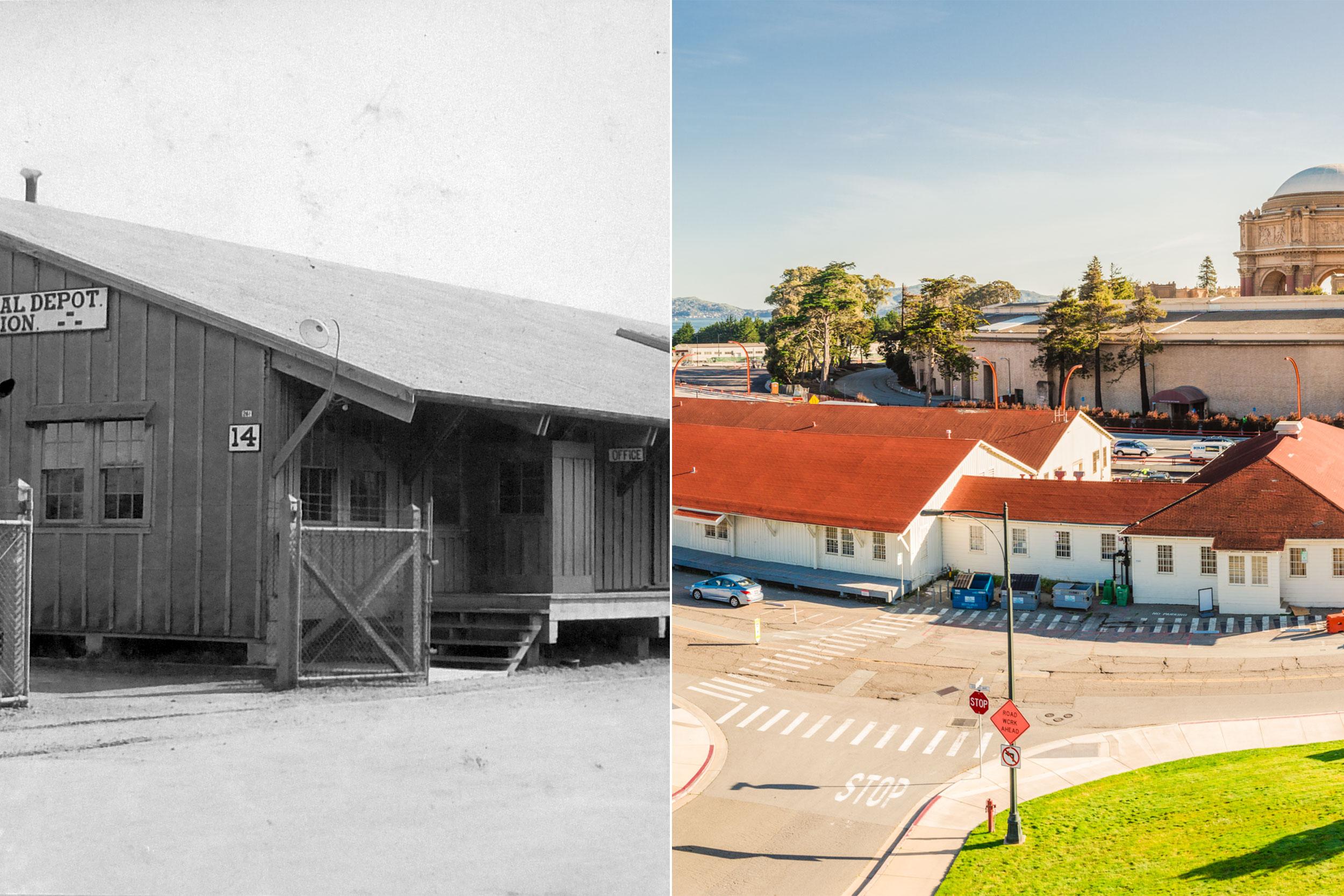Sep 20, 2018
Then and Now: Historic Gorgas Rail Warehouse Complex
The renovation of these warehouses shows how historic spaces can be reinvented for today's needs.The historic Gorgas Rail Warehouse Complex is in one of the most accessible and desirable areas of the Presidio. Its recent renovation is an excellent example of how historic character provides a unique adaptive-reuse commercial space opportunity.
While at first the newly renovated historic Gorgas Rail Warehouse Complex might seem like your standard issue Army warehouses, they’re actually enmeshed with rich layers of Presidio history. The stories of the warehouses and the railroad they were built along touch on a world’s fair, medical care, libraries, and the exploration of outer space. Read on to learn how the Gorgas Warehouses are now one of the most accessible and desirable areas for unique commercial space in the Presidio.
See floor plans, and learn more Gorgas Rail Warehouse Complex’s’ amenities and leasing options >>
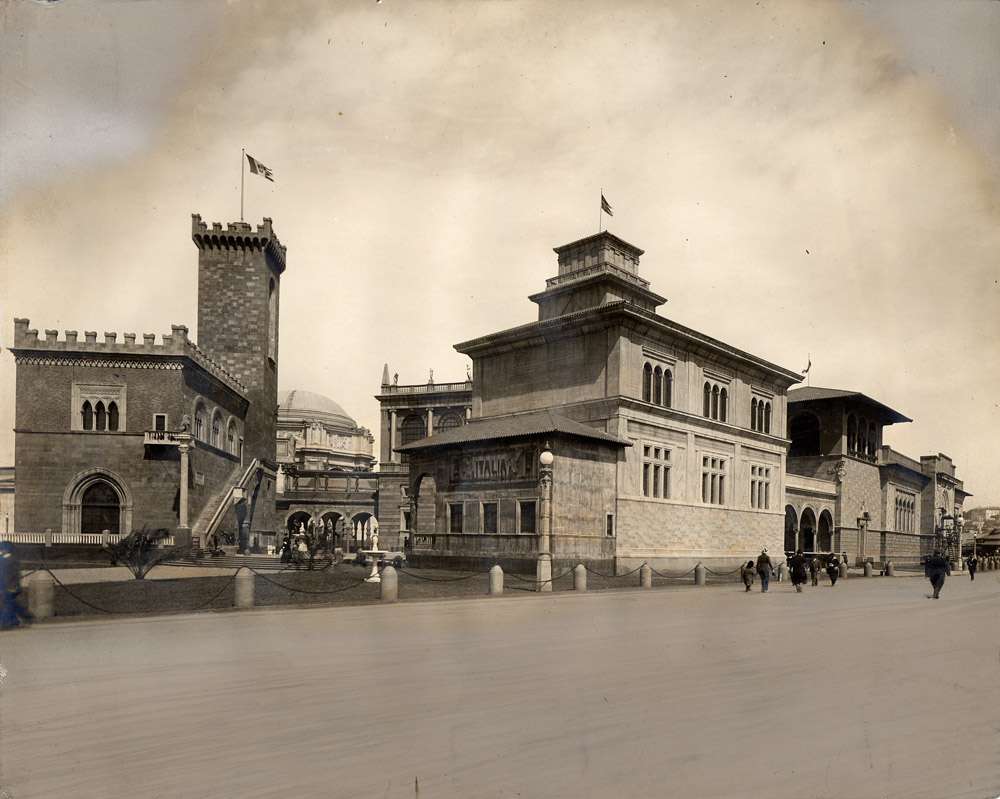
Then: 1915 – The Italian Pavilion
The warehouses now stand in what was once a salt marsh, and the Army didn’t use this area of the Presidio for much in the 1800s. The Panama-Pacific International Exposition, or World’s Fair, of 1915 finished the work of filling in the marsh in return for the use of the land for the exhibition buildings of the states and other nations, as well as creating a location for the Palace of Fine Arts. Before it was Gorgas Avenue, the road where the warehouses are located was called the Avenue of the Nations. At that time, the future site of the warehouses was occupied by the Italian Pavilion, shown above with the Palace of Fine Arts in the background. The Italian Pavilion was only temporary, but the Presidio got to keep the new land.
Photo Credit: Image courtesy of the San Francisco Historical Photograph Collection, San Francisco History Center, San Francisco Public Library. CC-BY-NC-ND
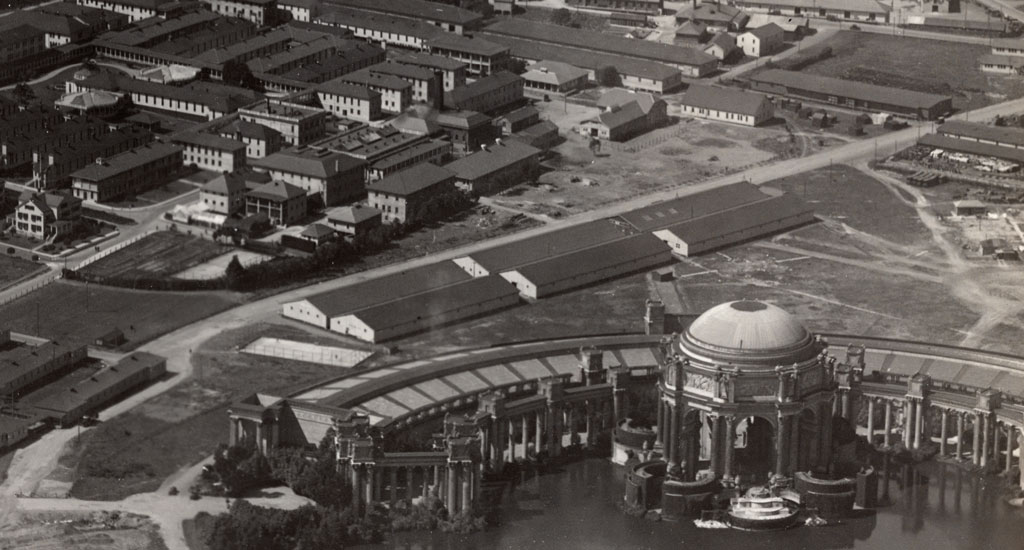
Warehouses circa 1922
Then: 1919 – Six New Warehouses
After the exposition ended, the Army bought the exposition’s railroad tracks and rearranged the tracks in the Presidio for its own use. The Army’s next goal was to connect the Presidio by rail to Fort Mason, where Army piers and a tunnel link to the State Belt Railroad (the railway line operated by the state of California) were located. On November 4, 1918, a week before the war with Germany ended, the War Department authorized the construction of the six wooden warehouses along the railroad connection to Fort Mason, and the warehouses were completed in 1919.
Photo Credit: Image by US Army courtesy National Archives and Records Administration (cropped from original)

Buildings 1161 (left) and 1163, circa. 1936.
Then: 1919-1941 – San Francisco Port of Embarkation and General Depot.
For about the next thirty years, the warehouses belonged to the San Francisco Port of Embarkation and General Depot at Fort Mason, which was responsible for the supply of Army installations throughout the West, Alaska, Hawaii, Panama, China, and the Philippines. They held supplies for the Signal Corps and the Medical Department, some of which were used to provide medical relief to Japan after the great earthquake of 1923. In October 1920, thieves sawed through the floor of building 1163 to steal bottles of morphine, opium tincture, and whiskey from the medical supplies. They were arrested not long afterwards.
Photo Credit: Images by US Army Signal Corps courtesy of Golden Gate NRA, Park Archives
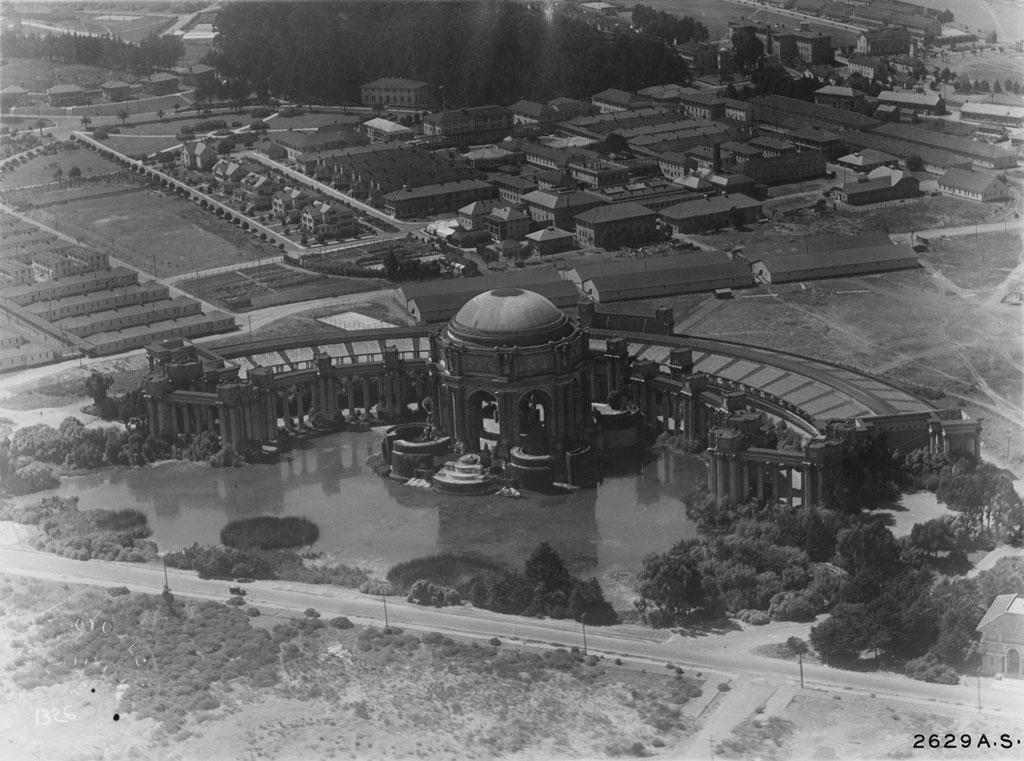
Image from 1923
Then: 1927 – The Palace of Fine Arts
After the Panama-Pacific International Exposition ended in 1915, many San Franciscans wanted to preserve the majestic Palace of Fine Arts, which was located on the Presidio reservation. In 1927, the Army and the city finally completed an exchange where the Army gave the land to the city in return for permanent right of way for the railroad connection to Fort Mason, which had only been temporarily approved for World War I.
Photo Credit: Image by US Army Air Service courtesy of National Archives and Records Administration
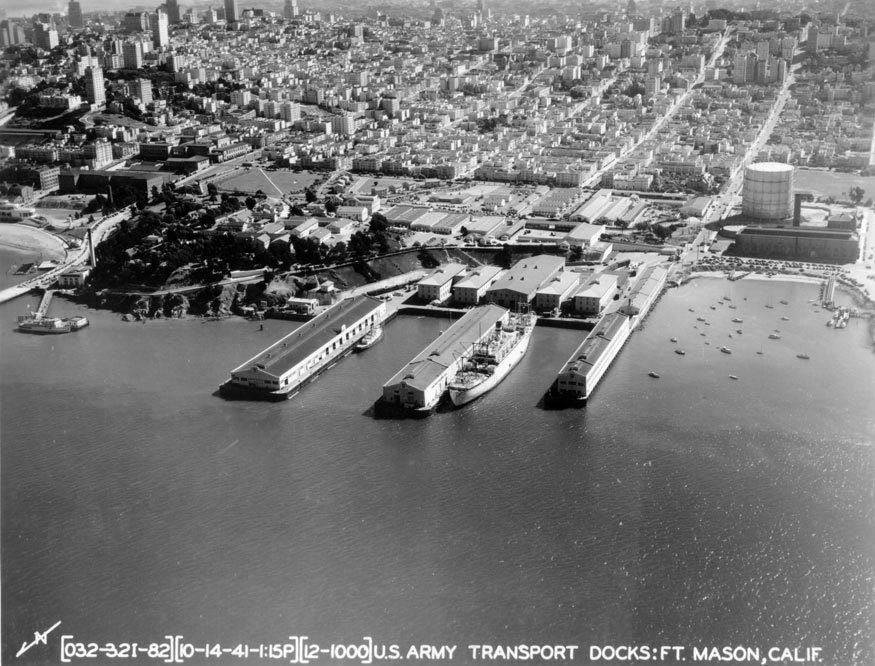
Image: Fort Mason, October 14, 1941
Then: 1941-1945 – World War II
With the outbreak of World War II, the San Francisco Port of Embarkation (SFPE) became the critical link in supplying equipment and troops from the U.S. to the theaters of operation in the South and Southwestern Pacific, which meant its activities expanded dramatically. By the end of the war, the Gorgas Rail Warehouse Complex were a part of a complex network of 11,300,000 square feet of storage space spread throughout the Bay Area. Over the course of the war, the SFPE was responsible for shipping nearly 23,600,000 measurement tons through the San Francisco Bay Area.
Photo Credit: Image by U.S. Army courtesy National Archives and Records Administration
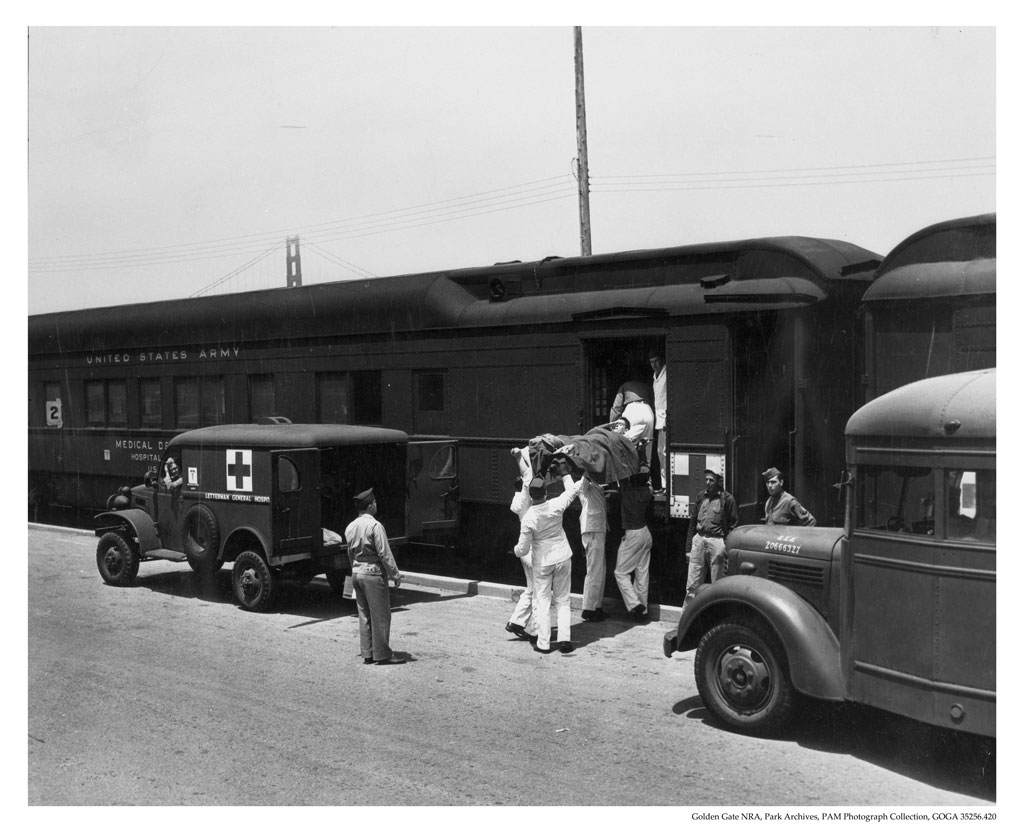
Image: Army Hospital Train, circa 1944
Then: 1941-1945 – World War II
Also during World War II, traffic on the railroad connection between the Presidio and Fort Mason increased with the hospital trains carrying soldiers injured overseas from the SFPE to Letterman General Hospital in the Presidio, and then from Letterman to other general hospitals for long-term care. Between July 1944 and December 1945, over 85,000 patients were transported this way.

Then: January 25, 1951 – Sixth Army Library Depot
In February 1947, the Army transferred control of the warehouses and the railroad tracks from Fort Mason to the Presidio, and the Army used them to serve a variety of storage needs for the post and families living there. In 1950, two of them – buildings 1163 and 1167 – became the location of the Sixth U.S. Army Library and Library Depot. For the next few decades, in addition to maintaining a collection for the headquarters of the Sixth Army located at the Presidio, this library supervised and distributed books to Army libraries throughout the West, and it could also build libraries of up to 10,000 volumes for shipping to units overseas. In the above photo, Mrs. Elvie Schriebman is packing a case of books for shipment to troops fighting in the Korean War.
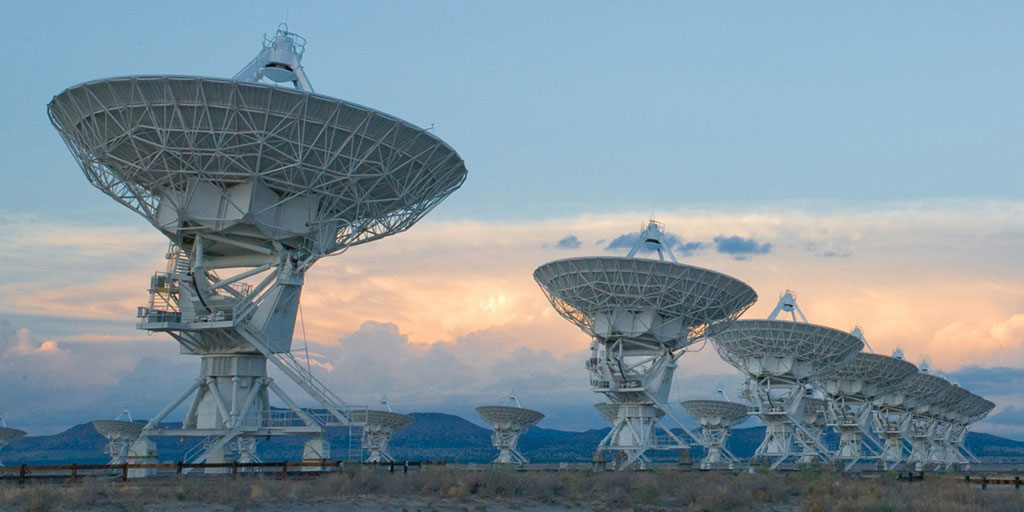
Then: 1979 – The Railroad is Removed
While the Army used the warehouses until the Presidio was transferred to the National Park Service in 1994, by the late 1970s, rail traffic had declined so much that the Army decided it no longer needed the railroad. In 1979, it removed the final pieces of track and equipment from the Presidio and transferred them to the National Radio Astronomy Observatory for its Very Large Array of telescopes in Socorro, New Mexico, where they remain in use today.
Photo Credit: Image by Alex Savallo courtesy National Radio Astronomy Observatory (CC BY 3.0)

Now: The Gorgas Rail Warehouse Complex is Available for Lease
Today, these historic warehouses have been rehabilitated and feature open interiors with high exposed beam ceilings and ample natural light from windows and skylights. Improvements also include new lighting, electrical, heating and ventilation, painted walls, refinished wood floors, skylights, and new or restored windows along with new common area restrooms.
The Gorgas Rail Complex is conveniently located along the new Presidio Parkway with easy access to the Golden Gate Bridge, the beautiful open spaces at Crissy Field, park trails, and the Chestnut Street retail corridor. The free Presidio GO Shuttle offers daily service to regional transit connections in downtown San Francisco. Muni and other public transit stops are within walking distance.
Learn more about this unique space in the Presidio and come work in a national park! >>
